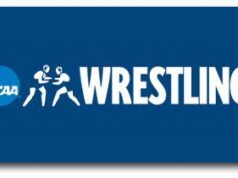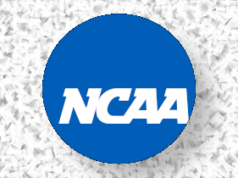
This is the first of a two-part series about transferring in college wrestling. The first article is about the transfer portal and NIL compensation for college wrestlers. Coming later is a shorter article about the portal and Division III wrestling.
Two main stories have dominated wrestling news and social media this spring (I started writing this before David Taylor became the Oklahoma State coach). One is last month’s Olympic Trials and the upcoming Paris Games. The other is the NCAA Transfer Portal and its connection to Name, Image, and Likeness (NIL) compensation for college athletes.
Penn State, Michigan, and Iowa finished in 1st, 3rd, and 5th place at the NCAA Division I Championships in March. Each team sent four wrestlers to the tournament who transferred into the school. Nine of those twelve athletes had become All-Americans before transferring. Three recent NCAA changes helped facilitate these moves and those of other athletes in the last few years.
- Loosened transfer regulations and the transfer portal – Division I athletes, until the advent of the transfer portal, had to request permission to speak to another school about transferring, and the current school had the right to refuse permission. Since the transfer portal went into operation, schools were required to place an athlete in the portal if he asked. The portal is a database of athletes available to anyone at an NCAA school with access. A wrestler can signal his desire to transfer to the entire NCAA just by having his name in the portal.
- An additional year of eligibility due to COVID-19 – Wrestlers could compete in the 2020-2021 season without using a season of eligibility, so anyone who wrestled that season has the opportunity for a fifth year of competition. That group is just about through college, and a good number of the recent transfers have been attending graduate school. Except for anyone with a medical redshirt year, the 2024-2025 season should be the last opportunity to compete for the majority of fifth year wrestlers.
- Name, image, and likeness compensation – College athletes can now receive compensation for their name, image, and likeness, an opportunity that was denied them until 2021. Wrestlers may decide to transfer with the hope of receiving NIL payments at their new schools. More on this below.
State laws vary surrounding NIL, and the NCAA rules and enforcement have been uneven and subject to multiple lawsuits. Regardless of laws or NCAA regulations, an athlete must provide something in exchange for NIL compensation. This has included social media posts, attendance at events, autographs, and other activities. The deals fall under two main categories. The first category encompasses endorsement deals. An athlete promotes a business in exchange for payment. Former Iowa women’s basketball player Caitlin Clark’s relationship with State Farm is a high-profile example of this first category of NIL compensation.
The second category of NIL compensation is much closer to a pay-for-play arrangement. Groups of donors, typically called NIL collectives, pool resources to pay athletes who attend the school supported by the collective. These organizations are not run by the schools and are separate from the athletic department, though there is a close relationship. If you see a report of an athlete being paid some amount of money to transfer, that money usually comes from a collective. In exchange for giving money to the collective, donors get access to certain perks that often include access to content and events featuring current athletes. The collective pays the athletes in exchange for creating digital content and attending these events.
The combination of the transfer portal and NIL compensation has created an environment where athletes have an incentive to enter the transfer portal and negotiate with schools through NIL collectives to secure large payments. Athletes leverage their success into dollars, while colleges compete to lure wrestlers who have already shown they can win at the college level.
Before the change in transfer and compensation rules, athletes had very little leverage, while the schools held almost all the power. An 18-year-old would commit to a school, it was difficult to leave, and scholarships were only guaranteed one year at a time (in most cases). Additionally, the athlete had no opportunity to earn money beyond a scholarship. Many athletes playing sports other than basketball and football are on partial scholarships, so they are paying some amount out of pocket to attend and play sports. For the first time, there is something like a market for talent where athletes can benefit financially from competition for their services.
The method by which athletes are getting paid is inefficient, opaque, and ripe for exploitation on both sides. Since schools cannot directly pay athletes as employees, donors and collectives step into the gap and provide the funds. If you read a poorly-sourced tweet about a wrestler being offered $200,000 to transfer to your favorite DI school, that money would come from donors who are working closely with the coaches and may also be directly involved in recruiting. This makes some people uncomfortable! From the fan perspective, it is no fun to root for a wrestler who does well only to have him leave for a school with deeper-pocketed boosters.
Prior to NIL and the portal, this sort of thing rarely happened. If a second-tier wrestling team recruited and developed an All-American, he almost always stayed for his whole career. What are the odds that a school like Edinboro, a Division II school with Division I wrestling, could now have consecutive top-five NCAA finishes like they did in 2014 and 2015? There is a good chance that at least one All-American might want to test the transfer waters in hopes of a five or six-figure payday.
Is the portal and NIL a net negative for college wrestling? It probably depends on your perspective and rooting interests. Some hyperbolically state that the portal will result in the death of college wrestling. Others limit their concerns to the fortunes of teams with fewer resources to devote to the sport. Still others can voice their misgivings while also expressing the view that wrestlers ought to have the ability to earn money in proportion to their abilities.
There are two questions that anyone having an opinion should be able to answer before arguing a side. What restrictions should be placed on athletes, and are those restrictions legally, morally, and ethically defensible? Many arguments against NIL and portal start out like this: It is good that athletes can be paid but… On the other side of that but is usually an idea that would limit athlete choice, earning power, or both. It is not unreasonable to advocate for some level of restriction on athlete movement or compensation in hopes of promoting other ideas like fairness, wrestling program health, or protecting athletes from exploitation by more sophisticated coaches, agents, or collectives. However, it is important to ensure that restrictions in the name of protection do not unreasonably limit a wrestler’ opportunity to benefit financially from his athletic ability during a short competitive career.
There are two kinds of wrestling programs that could lose out in the portal era. The first is the type that is getting the most attention now—a college in non-power conferences that loses an All-American-caliber wrestler to a higher-resourced school. This has not happened many times, especially if graduate transfers and wrestlers transferring after a coaching change are removed from the list. These schools are not typically in contention for a national championship trophy, and, while losing an elite athlete hurts, the teams should still be able to continue to compete for conference honors and to send wrestlers to the NCAA tournament. This was true before NIL and will continue to be so in the future. NIL and the portal have not materially changed the pecking order of NCAA wrestler (or any other sport). Ohio is not chasing down Ohio State anytime soon, no matter what the transfer rules say or how much wrestlers get paid.
The other type of school that could be hurt by NIL and the portal are power conference schools that cannot keep up with others in their conference. If your school lacks enough rich donors to pay wrestlers, your team will fall further behind. When Iowa, Penn State, and Ohio State can pay to attract and retain talent, they can open up an even bigger gap on Indiana, Purdue, and Northwestern in the Big Ten. If care about parity in wrestling, this is the area on which to focus. Ohio does not need to catch Ohio State to have a healthy program. They can focus on Central Michigan, Northern Illinois, and Lock Haven while also working to get guys on the podium in March. If NIL and the portal keeps Maryland and Michigan State from getting closer to the top, that may one day affect the competitiveness of the national tournament.
Despite the handwringing surrounding this issue, nothing about the portal era has changed the national championship picture. Parity has never been part of modern NCAA Division I wrestling. In the past 30 years, just five teams have won the NCAA team title, and four others have placed second without winning in that time span. High-resource teams win the most. This has been true as long as there has been college wrestling. The top ten at the 2024 NCAA Championships looks a lot like the top ten at the 2014 tournament which looks a lot like the top ten at the 2004 tournament. The transfer portal has not meaningfully changed who can compete for a championship. Will fans really give up on supporting a team because the chance to win a team title is slightly worse than it was before? If you were going to drive 500 miles to the beach for vacation, would you cancel the trip if you instead had to go 510 miles?
The portal and NIL do not make up a perfect system, but, barring congressional action, it is the system that exists. Athletes get freedom, money, and the risks that go along with both. Recruiting and retention is more stressful for coaches who now must also manage a “payroll” effectively controlled by someone else (donors). Fans still can watch and cheer for high-level wrestling. I think that wrestling will be OK, and the product on the mat will be as good as it ever was. College wrestling, and college sports in general, will continue to change as they have since 1934 when Oklahoma State won the first official NCAA team title. Some things stay the same, however. Ninety years after that first NCAA championship, Oklahoma State is dominating the current news cycle with the announcement of David Taylor as their next head coach.





